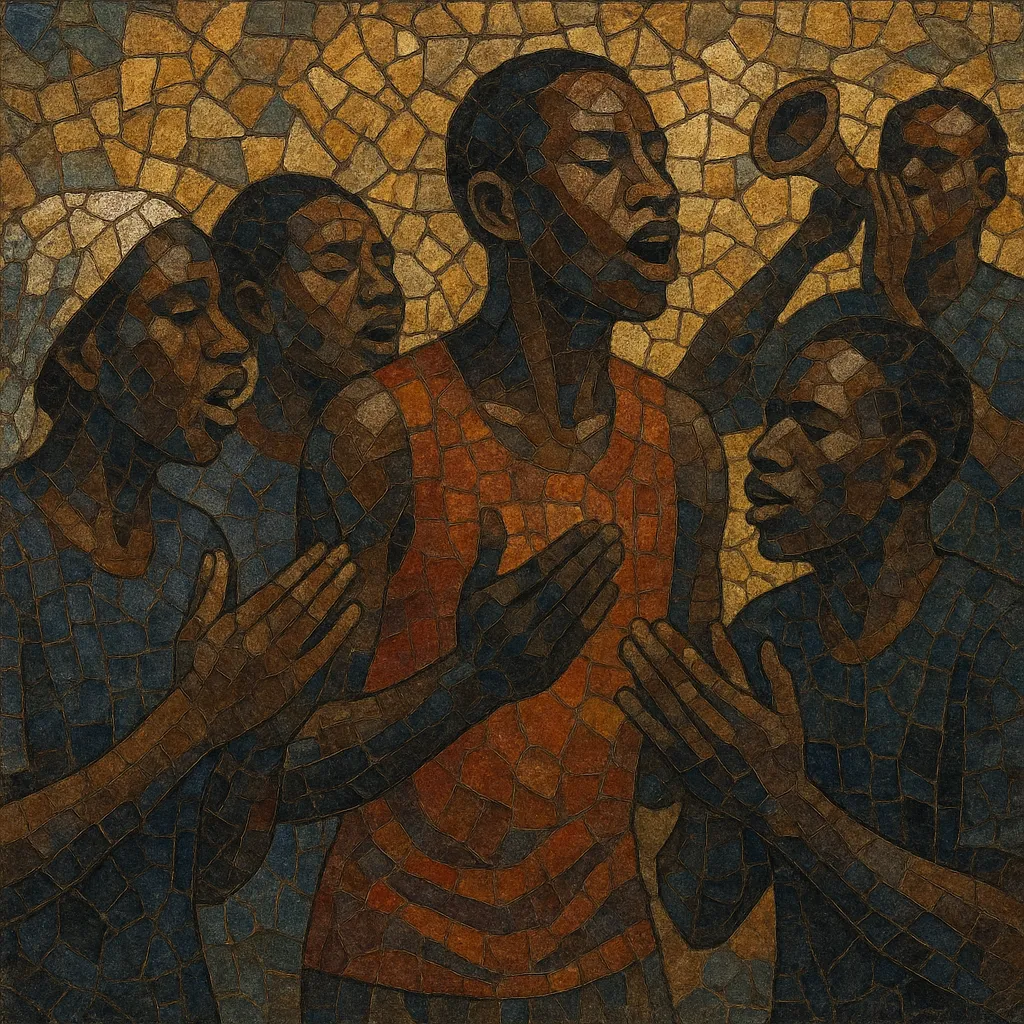
Nuer music refers to the traditional and contemporary musical practices of the Nuer (Naath) people of the Upper Nile region, today centered in South Sudan with communities in western Ethiopia. It is deeply tied to pastoral life, social identity, and communal ceremony.
Traditionally, Nuer music is strongly vocal-centric, featuring solo leaders with choral responses, handclapping, foot-stomping, ululation, and occasional whistles or horns. Melodies tend to be narrow in range, rhythm is often propelled by body percussion and clapping patterns, and songs commemorate cattle, kinship, rites of passage, and historical events. In the 20th century, Christian hymnody and urban influences introduced new harmonic sensibilities and choral practices in the Nuer language, coexisting with older cattle-camp singing and dance styles.
In the diaspora and urban centers, artists have adapted Nuer song forms to popular idioms, blending traditional call-and-response and Nuer poetic imagery with modern instrumentation, amplification, and global genres.
Nuer music predates written records and developed within a pastoral society where singing, dance, and poetry are central to social cohesion. Songs memorialize cattle lineages, praise individuals, encode personal histories, and mark communal events such as marriages and harvests. Performance is typically collective, with a leader cueing antiphonal choral responses.
During the late 19th and early 20th centuries, missionaries and schools introduced Christian hymnody and choral singing in the Nuer language. These practices did not replace older forms; instead, they ran in parallel, adding structured stanza-chorus formats, harmony in parallel thirds and fourths, and church choir organization to the existing repertoire of cattle-camp songs and dances.
Conflict and displacement in the late 20th century spread Nuer communities across East Africa and beyond. In refugee settings and diaspora, Nuer musicians preserved identity through language-based song, church choirs, and community events, while incorporating keyboards, guitars, and drum machines. The result was a continuum from traditional unaccompanied vocals to hybrid popular styles.
Since the 2000s, Nuer artists and ensembles have gained international visibility. Some foreground traditional instruments (notably the thoom/thoom sim) and call-and-response textures; others blend Nuer vocal contours with hip hop, Afro-pop, and contemporary gospel. This period has also seen cultural troupes and community choirs document ceremonial repertoires and present them on global stages.

